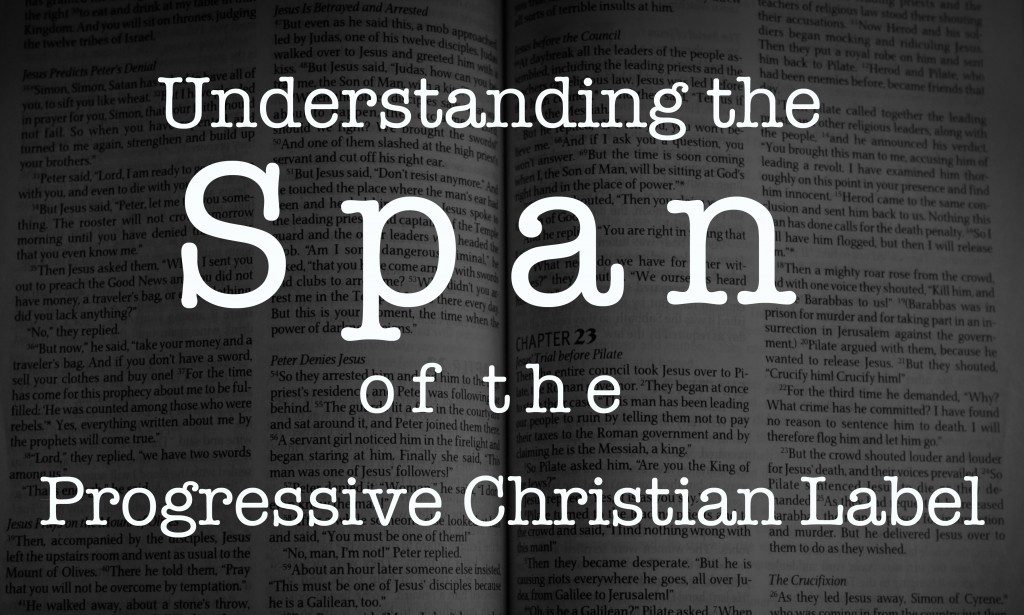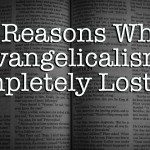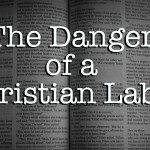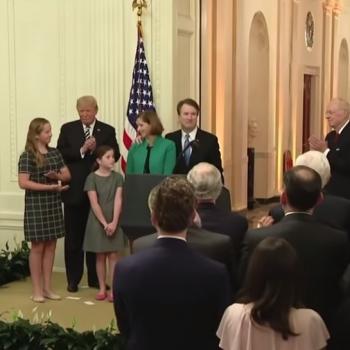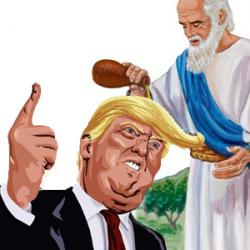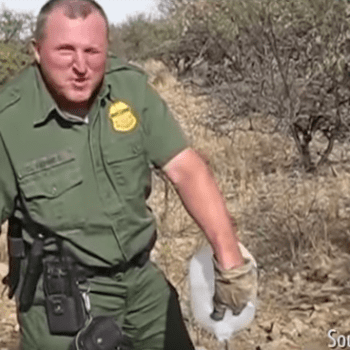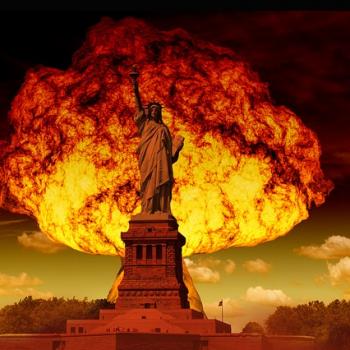Last week I wrote two back-to-back posts dealing with Christian labels, and how there are things about both the Evangelical and Progressive Christian label that I have a hard time with (I guess this post makes it a series on labels), though I love and identify with much from both groups. Both articles generated good discussions on multiple levels, as it seems I’m not alone in feeling like today’s Christian labels are inadequate in capturing my faith in a word or two.
There was particularly interesting (good) discussion surrounding the Progressive Christian label– though there was a lot of discussion of who is in and who is out. This brought to mind how broad the label actually is, with different groups defining the boundaries differently from their individual perspectives.
When I take into consideration all the discussion and step back to look at the label from 50,000 feet, I see a label that has grown and morphed into something that encompasses several different groups of people- thus the rub between folks who are trying to decide who is, and who is not, a Progressive Christian. As a result, I wanted to do a follow-up post on how I see this label currently functioning within American Christian culture, to help folks understand how broad of a category “Progressive Christian” actually is. (This is all based simply on my own observations, so if I’m wrong on any count, I’m fine with that.)
First, an incredibly reduced and over-simplified view of American Christian history.
The late 19th and early 20th century brought some big changes/movements in American Christianity that were often reactionary to one another. Theological liberalism (an actual term, not a pejorative) had gained a lot of ground in modernity, something more conservative Christians weren’t happy about. This brought us things like the decline of historic Evangelicalism that spawned the birth of fundamentalism (which in historical origins, wasn’t bad- it was simply a movement that set out 5 fundamentals of the Christian faith they thought were essential doctrines). With the fundamentalist and modernist controversies of the 1920’s and the birth of Pentecostalism at that same time (but not a reactionary movement as was fundamentalism), we see many different Christian groups split under the emergence of new labels throughout this period. This included a re-birth of trans-denominational Evangelicalism as a reactionary movement to fundamentalism, who the Evangelicals felt went too extreme in their reaction against modernists/theological liberals/social gospel, etc.
Throughout a volatile Christian history in our culture we see reemergence of theological liberalism (flowing from mainline traditions) which, (in my opinion), morphed to form the original base of Progressive Christianity. This brings us to the the first two groups I see currently sitting under the Progressive Christian label:
Group 1: Liberal Christianity
I would describe this category as being the far-left of the Progressive label. This group may or may not be associated with a particular Christian tradition (denomination), tend to both appreciate but have deep skepticism towards scripture, often rejecting parts of it they feel objectionable or did not happen. They may view Jesus as being one way to God or one way to help understand God, but would not affirm the exclusive claims made by Jesus, such as John 14:6. This group is very socially conscious, and is typically very kind and inclusive toward others. However, the beliefs often affirmed or denied by this category often place them outside the realm of what has been considered traditional orthodoxy.
When more conservative Christians make sweeping generalizations and condemnations about “Progressive Christianity” I think what they are actually reacting against is this category- falsely assuming that the average progressive falls into category 1.
* While this category makes up some of the kindest people I know, there is a small minority in this category who have become fundamentalists of sorts, and can be very intolerant of anyone outside category 1.
Group 2: Progressive Mainline Christians
While I think that Progressive Christianity includes many mainline churches, some certainly do fall on the more conservative side of the fence. This group would include mainline Christians/churches that affirm the historic, orthodox faith, but who have some aspect of belief (perhaps egalitarianism or LGBT inclusive) as well as more liberal political beliefs, which make them distinct from their more conservative counterparts– thus landing them in “progressive.” My best guess is that this group actually makes up the bulk of Progressive Christianity today, but that’s just my speculation.
Group 3: The “Not Sure What I Am Group”
Group three would comprise folks who don’t cleanly fit the preceding or following categories. These folks may have come out of mainline or out of Evangelicalism, but don’t really hold to either identity– or perhaps they even entered Christianity here, without a previous stop. These are folks who may be considered “seekers” who are interested in Jesus, and who hold some beliefs (whether theological or political) that cause them to identify with the word “progressive.” They make their home under this label because they find it to be a safe place to wrestle and explore this whole Jesus thing.
— I personally see Group 1 and 2 making up original Progressive Christianity. But remember how I said the rebirth of Evangelicalism was reactionary away from fundamentalism? Lately we’ve seen the opposite trend, which has created some interesting movements from a social standpoint. Like the fundamentalist and modernist controversies of the 1920’s, today we’re seeing a very similar play between modern Evangelicalism and Progressive Christianity. And, just as happened in the 20’s, we’re seeing the more conservative of the two in the mix (Evangelicalism) working to reaffirm certain fundamentals of the faith they feel are essential– making Evangelicalism become somewhat of a post-modern fundamentalism. However, what we’re seeing in Evangelicalism is that the fundamentals they are affirming (perhaps more “cultural norms” than written fundamentals) are fare more exclusive than what even the original fundamentalists reaffirmed in the 20’s. This has caused a flow out of Evangelicalism by folks who can’t sign on to the new fundamentals, bringing us to Group 4:
Group 4: Post-Evangelicals
The folks who have had strong identities as Evangelicals, but feel that the growing restrictions of the label have left them behind, landed in a no-mans-land. However, since one of the original aspects of Progressive Christianity was inclusiveness, the label expanded to include this group too. Group 4 gets along really well with Group 3 and Group 2, but still hold to some or even many Evangelical beliefs, which often puts them into conflict with some (or many) folks from Group 1.
Group 4 could also be called “Emergence Christianity” (though maybe not exclusively so) because they’re often the folks from the Emergent Church Movement that had/has origins in Evangelicalism. While the ECM is still its own, distinct category that could be discussed separately, one of the interesting things I’ve seen in the last five years or so is that the Emergent label has slowly been swallowed up by the Progressive label, causing the use of the word to decline. Personally, I would like to see this trend reversed and to see Emergent reemerge (see how I did that?) as its own distinct category. This would better allow the Progressive label to maintain more of a mainline and post-liberal heritage and would allow those from the ECM to maintain aspects of our Evangelical heritage that we still hold valuable. (But even if it doesn’t, that’s fine– I think the average category 2&3 person have far enough in common with category 4 that being under the same label will functionally work.)
…
So, those are the four main categories I see the term Progressive Christian currently encompassing, at least by functional use of the term. Did I miss a category?
Where do I see myself?
I’m clearly a category 4 person, perhaps a classic “emergent” Christian who also holds to a strong Anabaptist identity.
Where do you see yourself?

